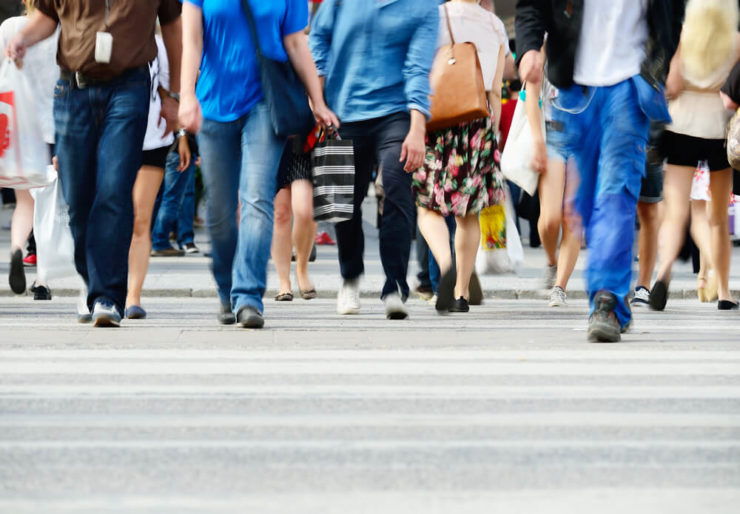Biotech
Healthcare facilities construction must adapt to many changes
What kind of changes should people expect when it comes to the United States’ health infrastructure?

President Trump talked a lot about health issues (cancer treatment, HIV research, drug prices, etc.) in his recent State of the Union address. Other elected officials throughout the country are also speaking out about healthcare issues. There is no alternative to providing citizens with healthcare services and government leaders are searching for ways to upgrade, modernize and expand existing facilities while constructing new ones. The country’s healthcare infrastructure has definitely attracted national attention and that will stimulate demand for construction services significantly in the next few years.
Some of the upcoming construction opportunities are huge. The city of Duluth in Minnesota has announced a medical infrastructure project that will likely represent an investment of more than $1.8 billion. City and government leaders will have some public funding but private investment will be required. A public-private partnership will upgrade medical facilities throughout the area.
As the demand for construction increases though, it is obvious that healthcare construction will change. There will definitely be new considerations and construction firms monitoring trends and needs will have a competitive advantage as construction opportunities increase.
Medical procedures and practices have evolved dramatically over the past decade. Leading-edge technology, research and training spaces will be required in all healthcare facilities. Digital record-keeping, network security, data analysis, and cloud storage planning will be required. New servers, routers, and cooling systems will have to be accommodated as construction plans are developed. Old hospitals and clinics that cannot be replaced will need to be redesigned and configured for technology requirements. Public facilities that require immediate attention are likely to need private-sector funding. That means that construction firms that understand public-private partnerships will benefit.
And, because so many hospitals have been impacted by storms in the past decade, resiliency will be a major consideration in new construction. Massachusetts General Hospital has announced that its $1 billion expansion will be designed to serve staff and patients following any types of future disasters. The construction that will occur there will also be funded in large part by private-sector investors.
A survey conducted by the American Society for Healthcare Engineering found that 89 percent of hospital facility professionals consider resiliency, such as the ability to withstand natural disasters and power outages, one of the most critical components in the design of new healthcare facilities.
In many parts of the U.S., population growth is impacting healthcare systems and networks to the point that adjacent facilities are required. Because many hospitals must release patients quicker because of overload and insurance requirements, demand for short-term rehabilitation facilities, day surgery clinics, and urgent care locations has emerged.

Population growth has an impact on healthcare systems and networks. (Photo by connel via Shutterstock)
The city of Pullman, Washington, is preparing to ask residents to approve funding for Pullman Regional Hospital’s proposed upgrades. A bond package will include construction of a community health facility, redesign, and upgrade of the city’s regional hospital, implementation of a communitywide electronic personal health record system and a number of other smaller projects. The election will be held in April and if it passes, construction would break ground shortly after that. The city hopes to complete the project by 2021.
The University of California, San Francisco’s Medical Center has also announced an upcoming opportunity for design and construction services. As the university expands and adds new programs and enhances existing programs, construction is required. The opening of the school’s Precision Cancer Medical Building is creating even more needs and construction firms interested in pursuing construction opportunities should know that preparation for services is underway now.
The University of Texas at Austin will soon select a construction manager-at-risk (CMAR) for the redesign of the Austin State Hospital. The new Austin State Hospital Brain Health Campus, which could cost up to $300 million, will include a new 240-bed hospital building as well as site development, support buildings, and infrastructure improvements. Subcontractor opportunities could be advertised as early as the third quarter of 2019.
Research facilities on university campuses are expanding throughout the country. Many schools are affiliating with private-sector hospital chains and research capabilities make any university more attractive to private-sector investors and partners. Cancer research and treatment facilities are available in every state and research programs focusing on the brain and brain injuries are becoming prolific also. Research facilities will require construction to expand and upgrade in the immediate future.
Officials at the University of California, Davis Health (UCDH) have announced construction plans. A firm to design and construct renovations in the Ambulatory Care Center of the university’s Ellison Building will be selected soon. The teaching hospital will consolidate several clinical practices and bring them into the building. UCDH has said it wants to deliver the project using the Progressive Design-Build model for phased renovation of the four-story, 375,000-square-foot building.
To summarize – healthcare construction demands are spiraling upward significantly and companies are advised to monitor healthcare needs and changes that will be required very carefully.
(Featured image by Zapp2Photo via Shutterstock)
—
DISCLAIMER: This article expresses my own ideas and opinions. Any information I have shared are from sources that I believe to be reliable and accurate. I did not receive any financial compensation for writing this post, nor do I own any shares in any company I’ve mentioned. I encourage any reader to do their own diligent research first before making any investment decisions.

-

 Cannabis2 weeks ago
Cannabis2 weeks agoRecord-Breaking Mary Jane Fair in Berlin Highlights Cannabis Boom Amid Political Uncertainty
-

 Crypto2 days ago
Crypto2 days agoXRP vs. Litecoin: The Race for the Next Crypto ETF Heats Up
-

 Biotech2 weeks ago
Biotech2 weeks agoVytrus Biotech Marks Historic 2024 with Sustainability Milestones and 35% Revenue Growth
-

 Crypto7 days ago
Crypto7 days agoRipple Launches EVM Sidechain to Boost XRP in DeFi























